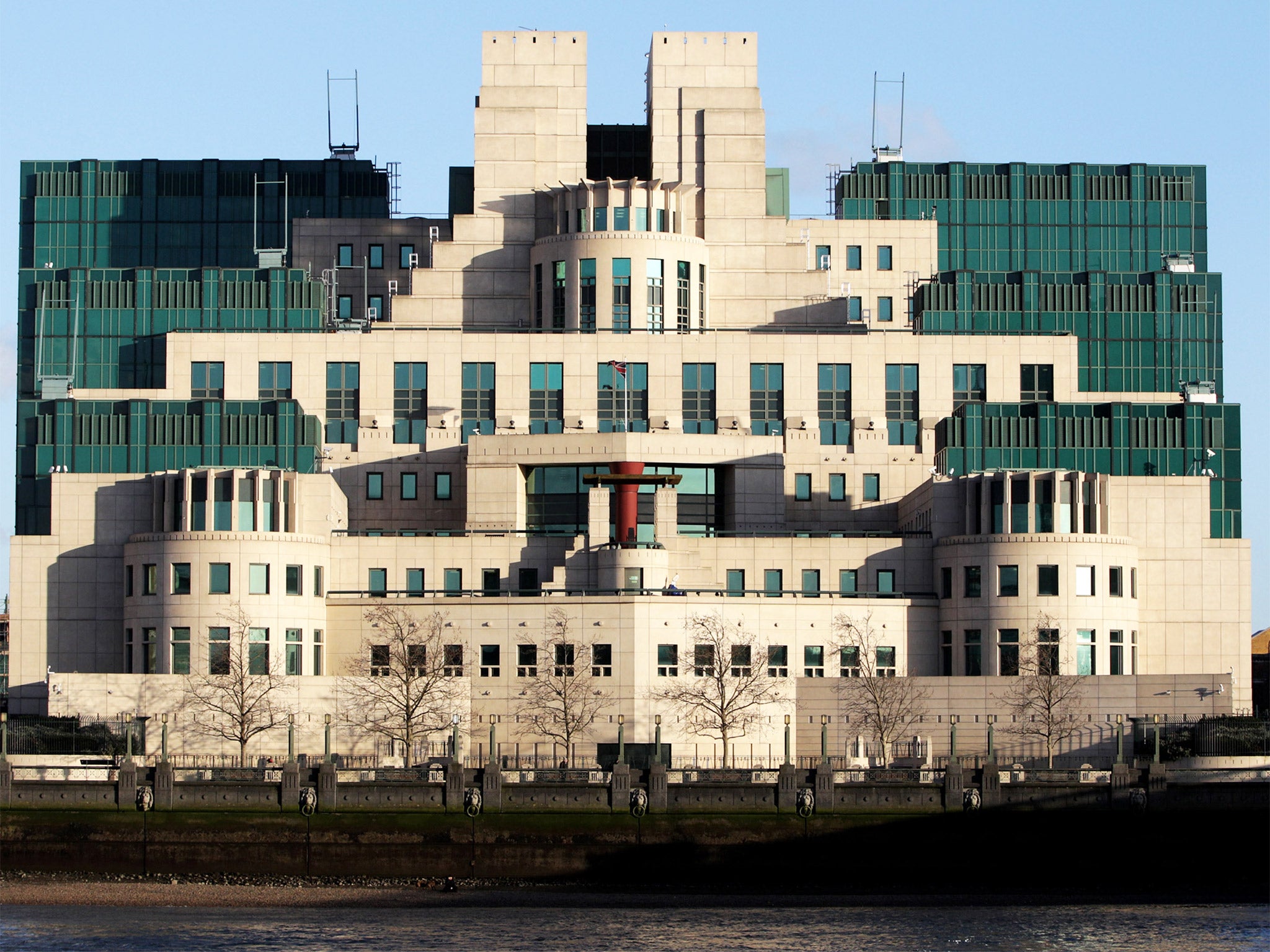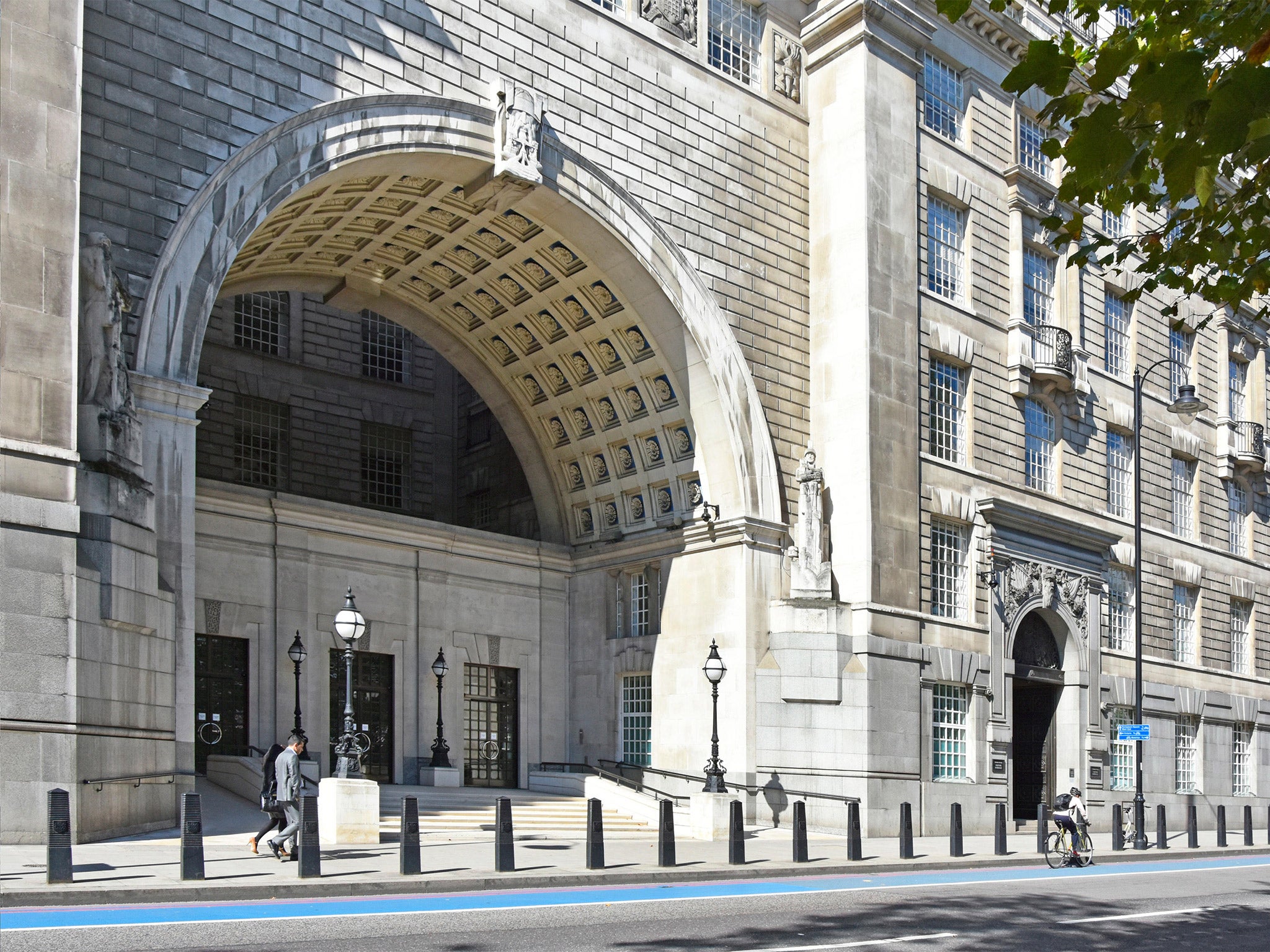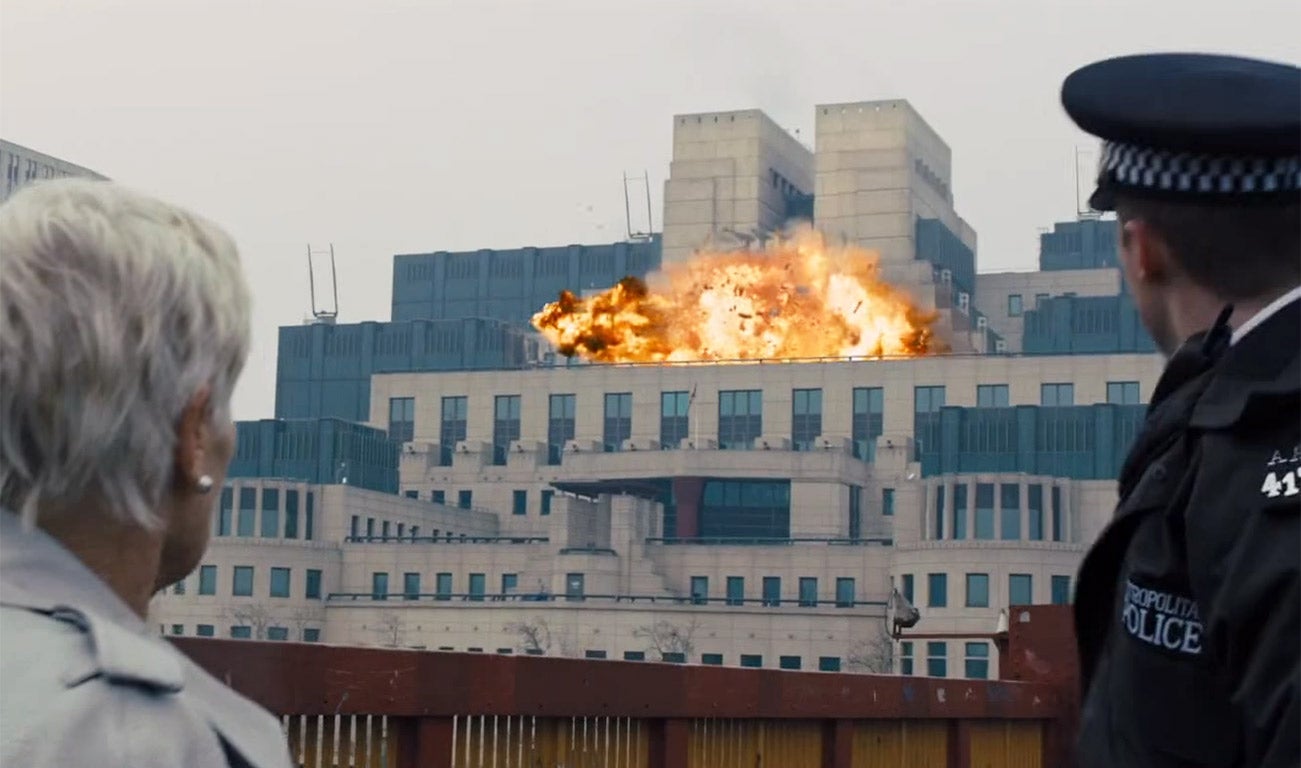MI5 and MI6 Thames-side headquarters could be moved into other government buildings in Whitehall
Exclusive: Security services would be relocated into existing Whitehall buildings as part of ongoing economy drive

Your support helps us to tell the story
From reproductive rights to climate change to Big Tech, The Independent is on the ground when the story is developing. Whether it's investigating the financials of Elon Musk's pro-Trump PAC or producing our latest documentary, 'The A Word', which shines a light on the American women fighting for reproductive rights, we know how important it is to parse out the facts from the messaging.
At such a critical moment in US history, we need reporters on the ground. Your donation allows us to keep sending journalists to speak to both sides of the story.
The Independent is trusted by Americans across the entire political spectrum. And unlike many other quality news outlets, we choose not to lock Americans out of our reporting and analysis with paywalls. We believe quality journalism should be available to everyone, paid for by those who can afford it.
Your support makes all the difference.James Bond may be returning to our cinema screens next week, but his real life counterparts could soon be on the move to a new London home, The Independent can reveal.
Ministers in charge of squeezing savings out of the Government’s multibillion-pound property portfolio are looking at the feasibility of moving the security services MI5 and MI6 out of their Thames-side headquarters and into other government buildings in Whitehall.
Any such move would free up two large – and world-famous – properties in prime central London locations, which could follow the Old War Office and Admiralty Arch onto the list of recent Government property sell-offs.
The cost of keeping civil servants in Whitehall is typically £35,000 per person per year, and the Cabinet Office, responsible for the Government’s estate strategy, has a plan to move more civil service functions to outer London where rents are cheaper, leaving acres of vacated Whitehall office space.
The Ministry of Defence, meanwhile, has cut more than 26,000 civilian jobs since 2010.

The high-level security infrastructure typically enjoyed by the remaining Government buildings in Whitehall makes them an unlikely option for mothballing, but some of them could serve as a potential new home for the security services. However, security sources said that any such move could prove costly and inconvenient.
Ministers have shrunk the central government estate by two million square metres between 2010 and 2014, saving £600m a year in running costs. The sale of buildings and Government land throughout the country has brought in £1.4bn.
However, ministers have asked government departments to look for new “disposals” to create £5bn in further savings by 2020.
Departments have also been urged to reduce or make more efficient use of vacant space.
The Government’s estates strategy document, published last year, states: “We are determined to maximise the efficient use of our assets and to ensure they better support the changing business of public service delivery. So we will continue to pursue radical options to squeeze the most value out of what is, after all, the taxpayers’ money.”
The Secret Intelligence Service – commonly known as MI6 – building at Vauxhall, neighboured on one side by luxury flats, and on the other by decades-old office blocks, has made memorable appearances in recent James Bond films.
Thames House, the home of the Security Service – or MI5 – is a grade II listed building on the north bank of the Thames at Millbank.
Government cost-cutting led to the sale of last year of the Old War Office building where Winston Churchill masterminded Britain’s Second World War strategy. The building was purchased in December by the multinational Hinduja group in partnership with Spanish firm Obrascon Huarte Lain Desarrolos, and is understood to be earmarked for redevelopment as a hotel.
The same fate befell the Admiralty Arch building, which once housed government offices before the lease was sold in 2012. It is set to become a hotel, and proceeds went toward the renovation and expansion of other government buildings.
The Cabinet Office’s estate strategy states that the Government’s goal should be “an efficient fit-for-purpose and sustainable estate whose performance matches the best of the private sector”.
“Departments are working on future disposals to continue this good work,” the strategy document says. “We expect at least a further £5bn of receipts by 2020, not just from offices, but from surplus land, airfields, barracks, prisons, laboratories, and so on.”
As of 2014, only 3 per cent of the central government estate was sitting vacant – compared to the national average of 10 per cent across the private and public sectors.
When asked about a possible move for the security services into Whitehall, a Government spokesperson said: “We have a well-established policy of not commenting on intelligence matters.”
Safe House: Why MI6 HQ is secure and symbolic
The MI6 building is nicknamed Babylon-on-Thames because it resembles a ziggurat. Less flattering names include Legoland and the Vauxhall Trollop.

The purchase of a new building for MI6 was approved by Margaret Thatcher in 1988 – before the government publicly acknowledged that the secret organisation existed.
It cost £135m to build, including the value of the land, and a further £17.5m for a variety of extras required specifically for MI6’s needs – including, it is rumoured, a tunnel to Whitehall.
Until the spooks moved to Vauxhall, when the building opened in 1994, they had been based in Lambeth in a building described as “irredeemably insecure”, not least because it was largely glass and had a petrol station in front of it.
Architect Terry Farrell designed the new building as, in essence, three blocks linked by courtyards and atria. The upper six floors are where the offices are placed while specialist computer suites, conference rooms and a sports area are lower down.
“A number of areas, including the main entrance hall, have been designed to accommodate the client’s particular security needs whilst specialist interior design was carried out throughout,” Farrells’ architecture website says.
Among the “security needs” were bullet-proof windows, bomb-blast protection, measures against electronic eavesdropping, and emergency back-up systems.
Farrell wanted an imposing edifice that would remind people of the power of the State.
Lewis Smith
Join our commenting forum
Join thought-provoking conversations, follow other Independent readers and see their replies
Comments